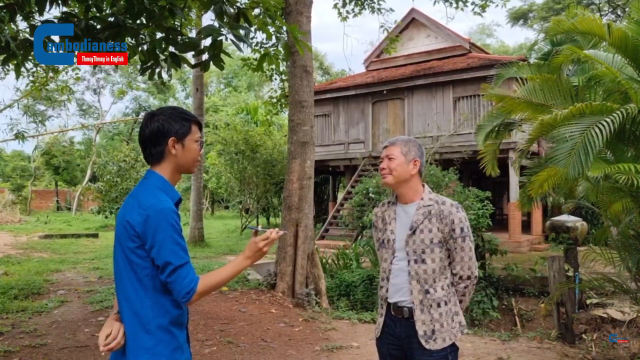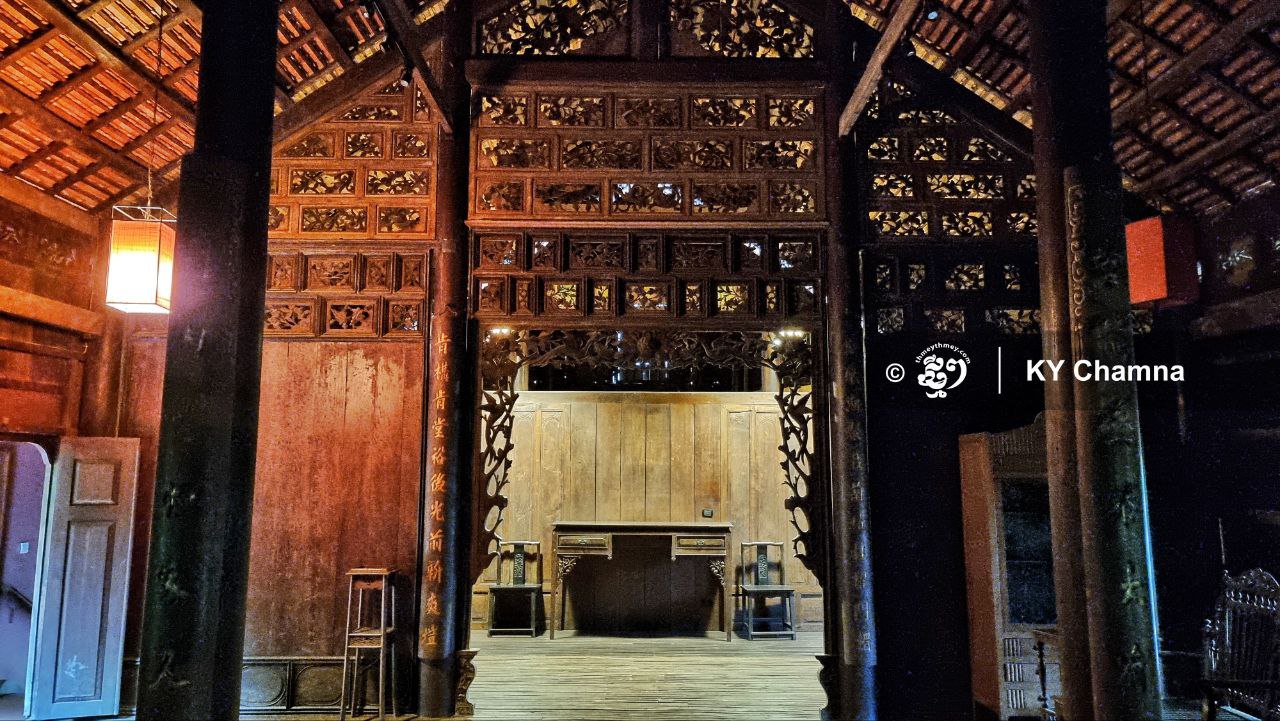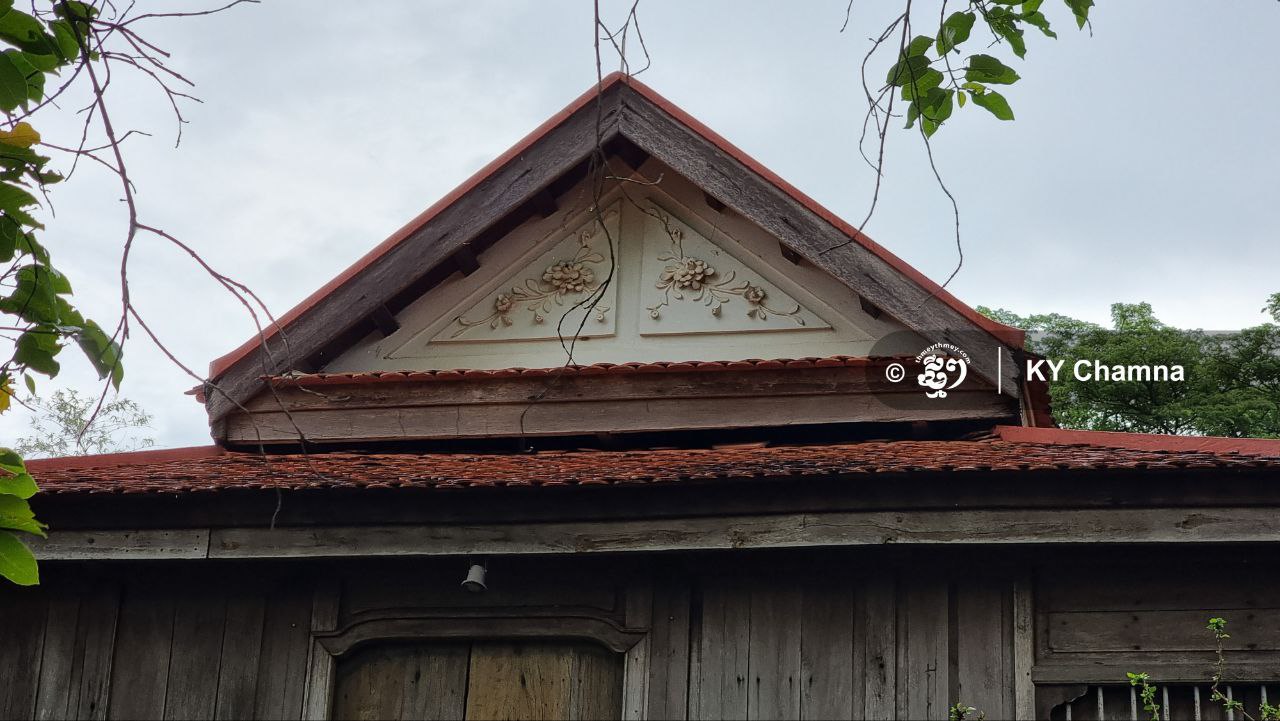Khmer Wooden Houses: Modernise, but Don’t Forget to Preserve

- By Ky Chamna
- July 19, 2023 2:00 PM
SIEM REAP — With urbanisation and breakthroughs in material science, Cambodia’s traditional architecture and especially wooden houses are becoming less and less common in the country.
Hok Sokol, a renowned architect of the country’s vernacular styles, stressed the importance of preserving and continuing the tradition of Khmer wooden houses.
Standing in front of a century old wooden house that was moved from the district of Kralanh in Siem Reap province, Sokol is still hopeful that, through education and awareness, the younger generations, although being highly involved in city life, still will be able to appreciate their traditions and these homes, which are part of their country’s history.
Ky Chamna: Why is there a decrease in the popularity of Khmer wooden houses today?
Hok Sokol: Cambodia has been through many periods over the last century, be it colonialism, independence and so on. Villagers’ way of life has somewhat changed compared to 100 years ago when it comes to residential areas or agriculture. At the same time, transportation and the use of cars and motorcycles have called for the construction of roads. The population increases and people need more land to live on. Moreover, we are also worried about having less wood to build houses and, although there are new materials such as concrete or steel to build with, not everything inside a vernacular wooden house can be replaced by them: The wall panels or clay roof tiles should be preserved, being distinctive to the tradition.

Ky Chamna: So, you mean the exterior skin of the house should at least be built according to tradition?
Hok Sokol: It is not always the case. This house, for example, its pediment was originally made of wood. Later on, when we had lime-mortar or concrete-mortar, which can be mixed with sand, we could use it to plaster the area. Instead of using wood, we used lime-mortar and brick to get that kind of curving. The flower motif was also inspired by the French colonial style.
_1689743040.jpg)
Ky Chamna: Lately, since more affordable construction materials can easily be imported internationally or made locally, a relatively new trend has appeared. Families with a more substantial budget, especially in the provinces, are switching from wooden houses to concrete houses. However, another opposite trend is also emerging. Some wealthy families are going from concrete houses back to luxury wooden houses. Does this movement make you feel interested?
Hok Sokol: This is not a desire or move backward or anything like that. The young generations of villagers enjoy very little their ancestors’ way of life in those traditional wooden homes. In addition, the urge to work and pursue their studies leads people to concentrate in cities. Apart from some working on farmland, people now work in factories or offices and this exposes them to a new way of life. So, for the sake of preservation, we cannot tell the younger generation to live like their parents. Still, through education programs, we need to make sure not to forget what our traditions are as the country modernizes.
_1689743058.jpg)
Ky Chamna: On a daily basis, although many city people prefer to live and work in structures mainly made of concrete, when it comes to retreats or national holidays, they still look for wooden houses surrounded by nature where they can relax. With this in mind, do you see a future for wooden homes as being transformed into an element for tourism and recreational activities?
Hok Sokol: There is hope that at least the younger generation can go back to their hometown and enjoy their ancestors’ way of life. At least they can be open minded and adapt to how their parents lived and how their village’s environment was or is. As you can see, during Khmer New Year or the Pchum Ben festival, the capital city is almost empty. During those periods, they return to their hometowns and enjoy what they have missed while in cities. I am sure that young people today cannot live without electricity, which is very different from our ancestors who were not able to rely on this source of power. However, this is not bad. Everything changes. We have to move forward. Education is important as it enables young people to understand our traditions.
_1689743075.jpg)
Ky Chamna: When you lifted this house to move it from its original location, some materials were so eroded that they simply needed replacement. By introducing new materials, do you feel that the house still retained its value in terms of age?
Hok Sokol: I do not feel interruption in my mind. We bought this house in 2008 and reassembled it here in 2010. I only replaced about 20 to 25 percent of the house such as a new basement, column footings and new bricks. Again, the replaced materials are not something that were not used in the previous century: I still used old-fashioned materials that can be more functional and look better in my opinion.

Ky Chamna: Do you have plans to preserve Khmer wooden houses in the future?
Hok Sokol: At the moment, not really…because preserving Khmer wooden houses is kind of difficult too. Master carpenters with the craftsmanship to do so have become increasingly rare. At the same time, it is also harder to find customers who would invest in preserving ancient Khmer wooden houses to live in every day or use as a weekend retreat. It depends… if the occasion presents itself, maybe I would be interested in doing one or two more projects. However, I don’t have much hope. Since the recent pandemic, I have noted that not so many people think of preserving vernacular Khmer houses. Instead, they build homes to meet their practical needs. Preservation demands more than just simply living in a home. You need to maintain it and enjoy keeping that heritage alive for decades or even centuries to come.

Watch the interview in English on:
YouTube: youtube.com/watch?v=02yn4dy0sHc
Facebook: facebook.com/CambodianessTTN/videos/621982286552438















